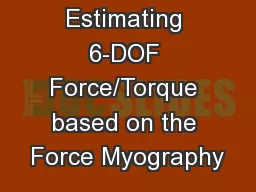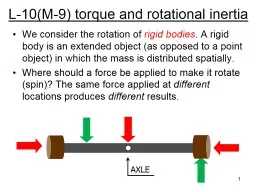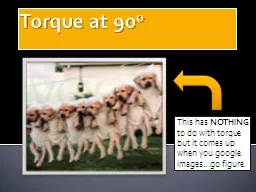PPT-Estimating 6-DOF Force/Torque based on the Force Myography
Author : jane-oiler | Published Date : 2017-10-22
Simon Fraser University Maram Sakr Alaa Eldin Abdelaal Syed Tanveer Jishan and Omar Eltobgy Simon Fraser University MOTIVATION METHODOLOGY PROPOSED APPROACH
Presentation Embed Code
Download Presentation
Download Presentation The PPT/PDF document "Estimating 6-DOF Force/Torque based on t..." is the property of its rightful owner. Permission is granted to download and print the materials on this website for personal, non-commercial use only, and to display it on your personal computer provided you do not modify the materials and that you retain all copyright notices contained in the materials. By downloading content from our website, you accept the terms of this agreement.
Estimating 6-DOF Force/Torque based on the Force Myography: Transcript
Download Rules Of Document
"Estimating 6-DOF Force/Torque based on the Force Myography"The content belongs to its owner. You may download and print it for personal use, without modification, and keep all copyright notices. By downloading, you agree to these terms.
Related Documents














